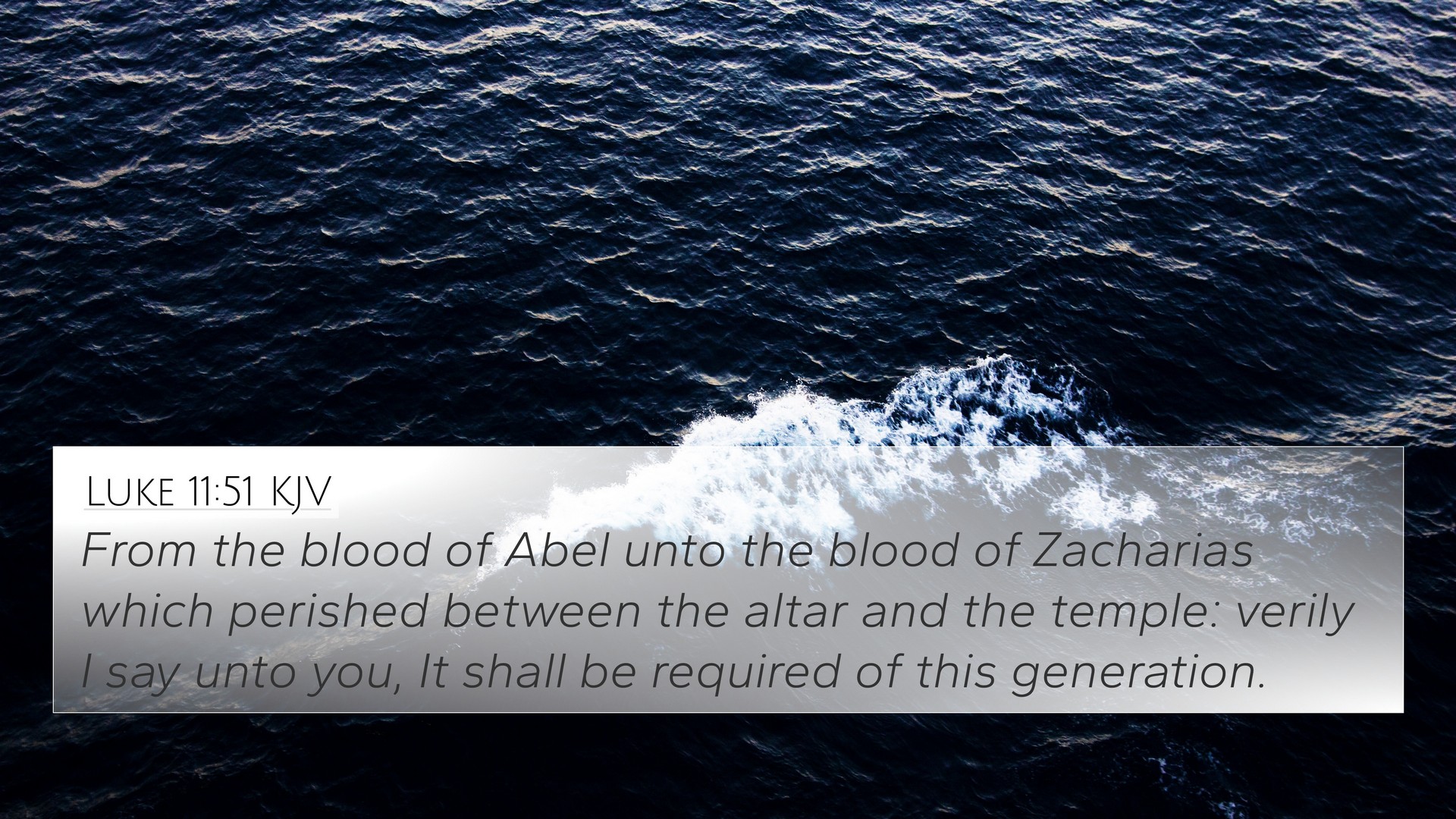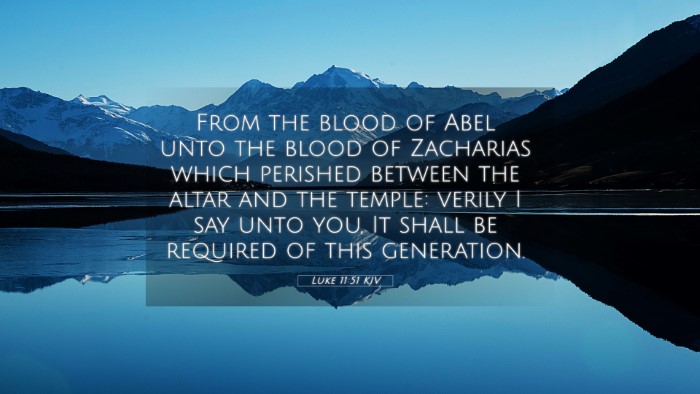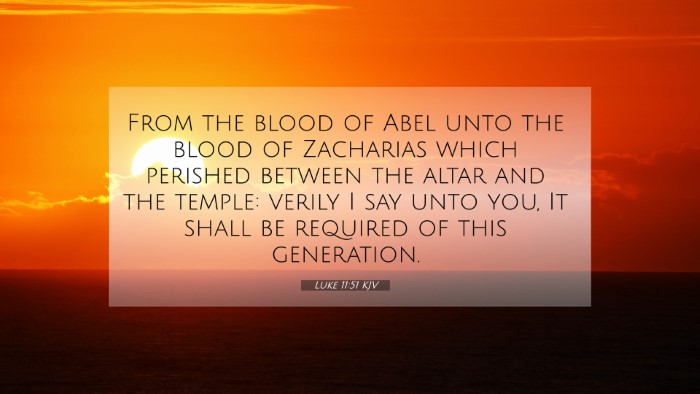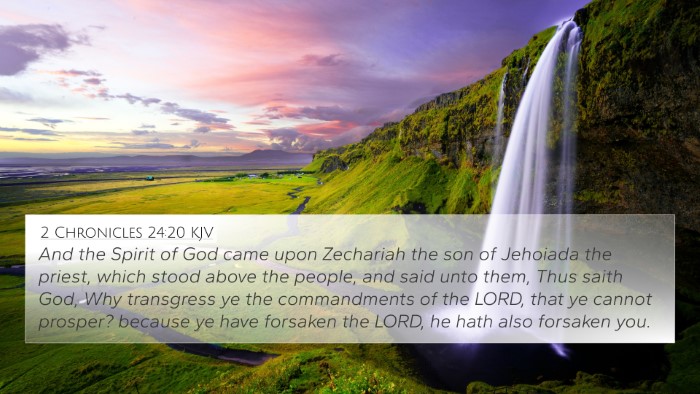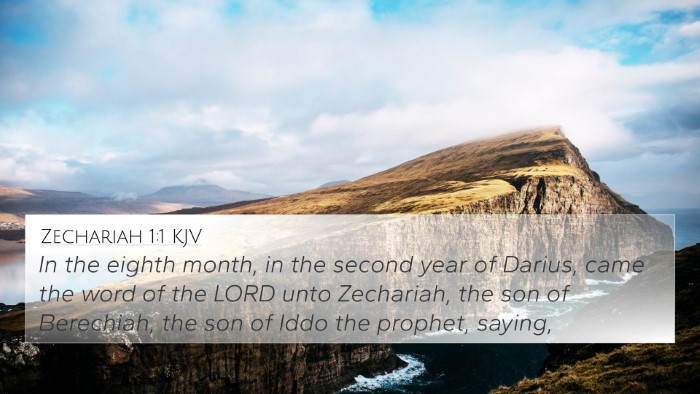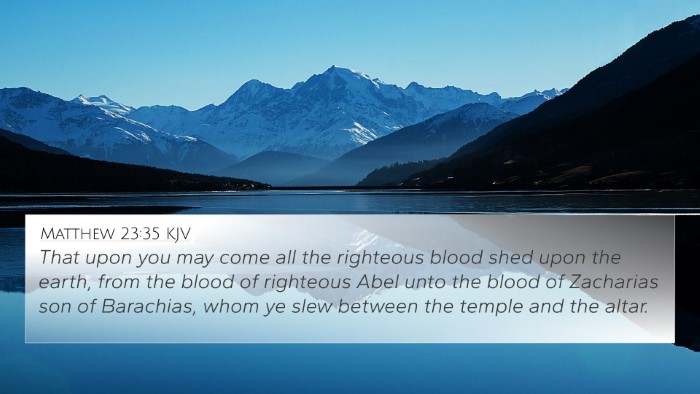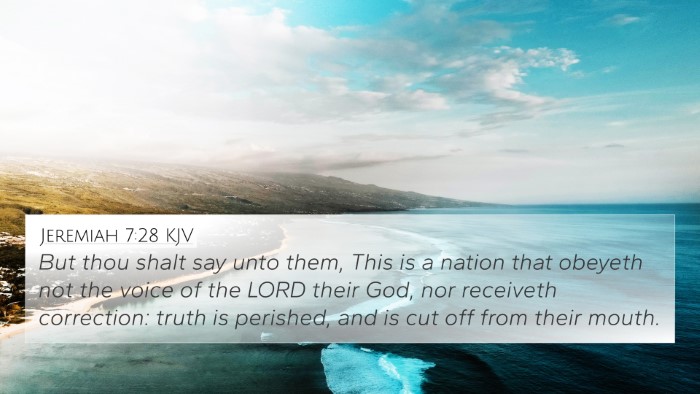Understanding Luke 11:51
Luke 11:51 (KJV): "From the blood of Abel unto the blood of Zacharias, which perished between the altar and the temple: verily I say unto you, It shall be required of this generation."
Summary of Biblical Meaning
The verse in Luke 11:51 serves as a sobering reminder of the consequences of rejecting God's messengers throughout history. Jesus references the murder of Abel, the first martyr, and contrasts it with the martyrdom of Zacharias, pointing out a continuity of violence against those who proclaim God's truth.
Commentary Insights
Matthew Henry's Commentary
Matthew Henry indicates that this verse illustrates the ongoing rejection of divine revelation and the violence inflicted upon God's servants through the ages. Henry highlights that Jesus' words serve as a condemnation of the current generation's failure to heed the warnings from the prophets before them. The wrath of God is not limited to those who lived before Christ but extends to the present, emphasizing the severity of the sin of rejecting God’s call.
Albert Barnes' Notes
Albert Barnes expounds on the significance of Abel and Zacharias, explaining how Abel's murder is emblematic of the very first shedding of innocent blood, while Zacharias represents the rejection of prophetic authority. Barnes asserts that Luke 11:51 shows a historical thread connecting suffering and persecution in the name of righteousness, thus illustrating that the cycle of violence against God's messengers continues, ultimately leading to the destruction of Jerusalem.
Adam Clarke's Commentary
Adam Clarke presents this passage as a testament to the apostasy of the Israelites, noting that they have a long-standing history of shedding the blood of the righteous. Clarke emphasizes that each martyrdom reflects a more significant aversion to truth and a profound rejection of God’s providence. He also correlates the burden of guilt that the present generation carries due to the failures of their ancestors.
Cross-References
Luke 11:51 can be connected to several key scriptures that illustrate similar themes of violence against God’s prophets and the consequences of sin:
- Genesis 4:8 – The account of Abel’s murder by Cain, representing the first act of violence against God’s chosen.
- 2 Chronicles 24:20-21 – The stoning of Zacharias, showing the hostility faced by prophets in the Old Testament.
- Matthew 23:34-36 – Jesus speaks of sending prophets and wise men who will be persecuted, echoing the themes in Luke 11:51.
- Revelation 16:6 – The reference to the blood of the martyrs, connecting past injustices to the final judgment.
- Acts 7:52 – Stephen’s speech highlights the history of persecution among the Jewish people, establishing a legacy of violence against God's messengers.
- Hebrews 11:4 – Abel's faith speaks even after death, reinforcing the idea of martyrdom in God’s plan.
- Luke 11:47-48 – This passage discusses the building of tombs for prophets while denying their words, linking historical rejection to current guilt.
Thematic Connections
This verse highlights several themes in biblical theology:
- Persecution of Righteousness – The enduring struggle of believers against societal and spiritual antagonism.
- Martyrdom – The suffering and sacrifice of those who proclaim God's truth, illustrated through biblical history.
- Generational Guilt – The idea that the sins of previous generations impact the current one, indicating a need for repentance.
- Divine Justice – God’s ultimate judgment on those who harm His messengers points to a future reckoning.
Conclusion
In summary, Luke 11:51 serves as a potent reminder of the spiritual lineage of persecution against God's prophets throughout history, as well as the responsibility of each generation to respond to God's call. By tapping into the experiential responses to God’s truth, believers are encouraged to stand firm in their faith and avoid the pitfalls demonstrated by past generations. The insights from Matthew Henry, Albert Barnes, and Adam Clarke assist in the interpretation and understanding of this rich biblical text.
Additional Tools for Cross-Referencing
To further explore the connections between Bible verses, consider these tools and techniques:
- Bible Concordance – A comprehensive index of terms and themes that can help identify related verses.
- Bible Cross-Reference Guide – Useful for finding thematic links between different scriptures.
- Cross-Reference Bible Study – Methods to study the Bible in a connected way, observing how verses inform one another.
- Bible Reference Resources – Various tools that assist in exploring scripture relationships and thematic links.
